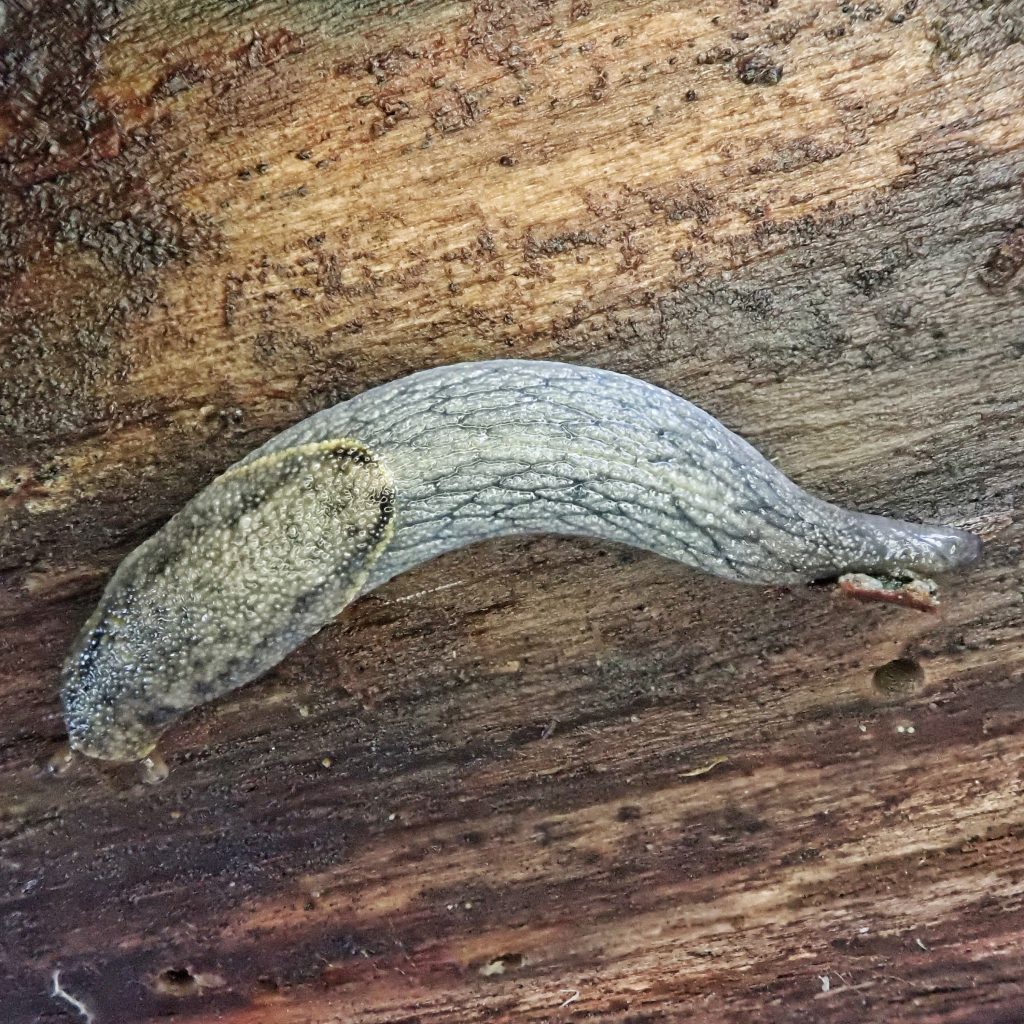
I’ve been putting off doing a profile on a slug until I had one that I could positively identify which was also a native species. It’s not that natives are rare (roughly 2/3 of our slugs are natives), but they can be tricky to identify, and, in my rush to find sexier species, I seem to forget to photograph the common, easily identified ones like the Pacific Banana Slug. But I am fond of Prophysaon foliolatum, in large measure because the yellow border around the mantle is distinctive, diagnostic, and visible from several feet away, and as soon as I spotted this one I immediately dug out the camera and dropped to my knees.
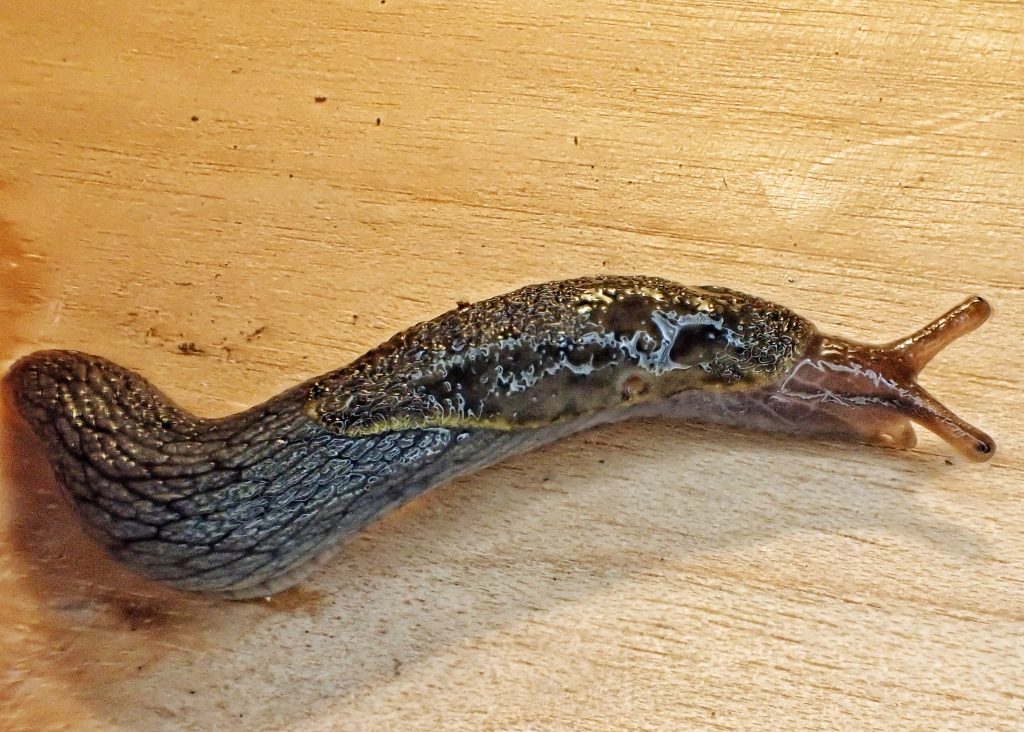
The reason I wanted to start with a native slug is because slugs get a lot of bad press as garden pests, but that acrimony should not be directed at our native species, which do far more good than harm. Having evolved in our region, where most green herbage is not present year around, they are all primarily fungus eaters (and fungus spore dispersers) or detritivores, which makes them a valuable element in the health of our forests and woodlands, and they do not tend to bother the primarily European imports we plant in our gardens, unlike the introduced European slugs which evolved with those plants, and have been dining on the cultivated varieties for centuries.
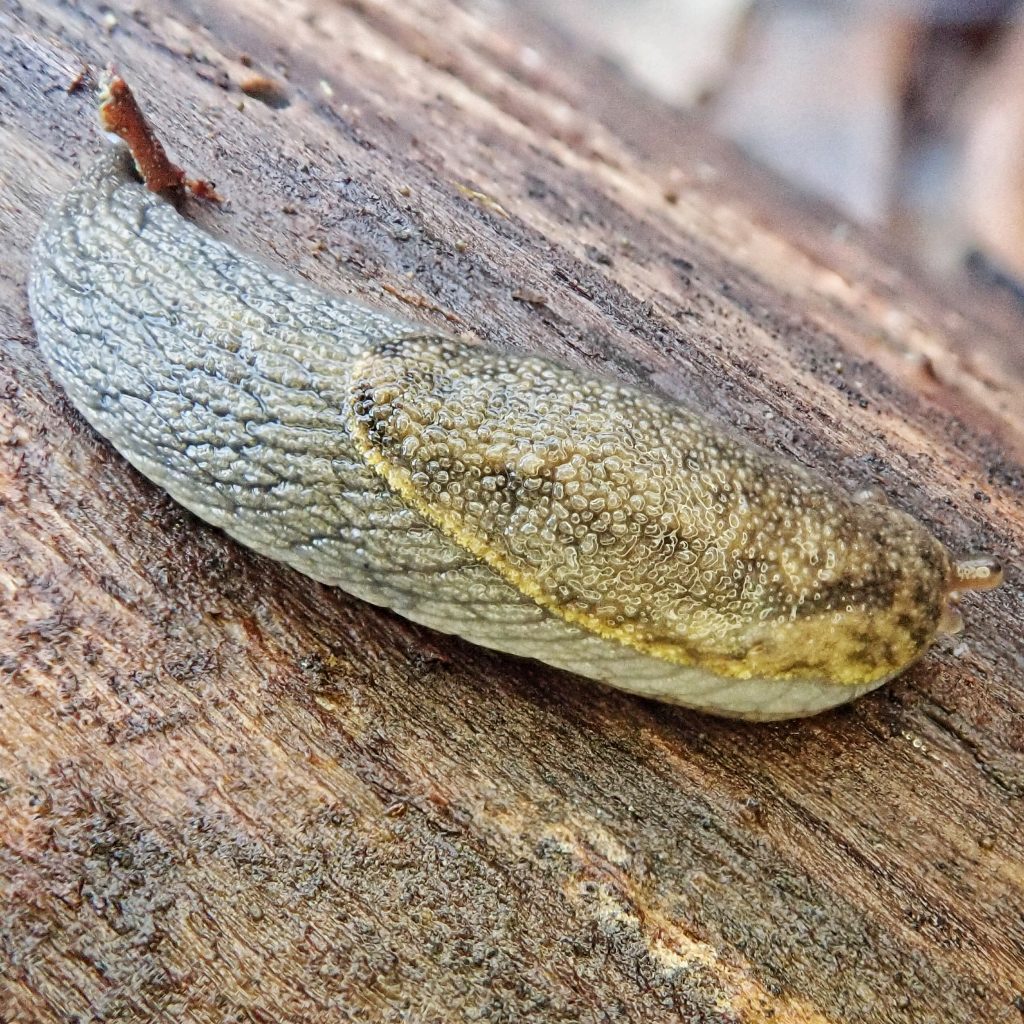
It was pointed out to me awhile ago by a regular reader (thanks, Dad) that I have never discussed the functions of the 4 extendable tentacles of terrestrial gastropods. The two upper tentacles contain the eyespots, and receptors for sensing airborne chemicals (smells). The lower tentacles are feelers and tasters. All of them move independently of each other, and one often sees various combinations of the tentacles waving about. The lower tentacles also help to funnel foodstuffs to the mouth, which contains the tongue-like radula with its thousands of tiny teeth, and is the organ slugs and snails use to ‘chew’ their food.
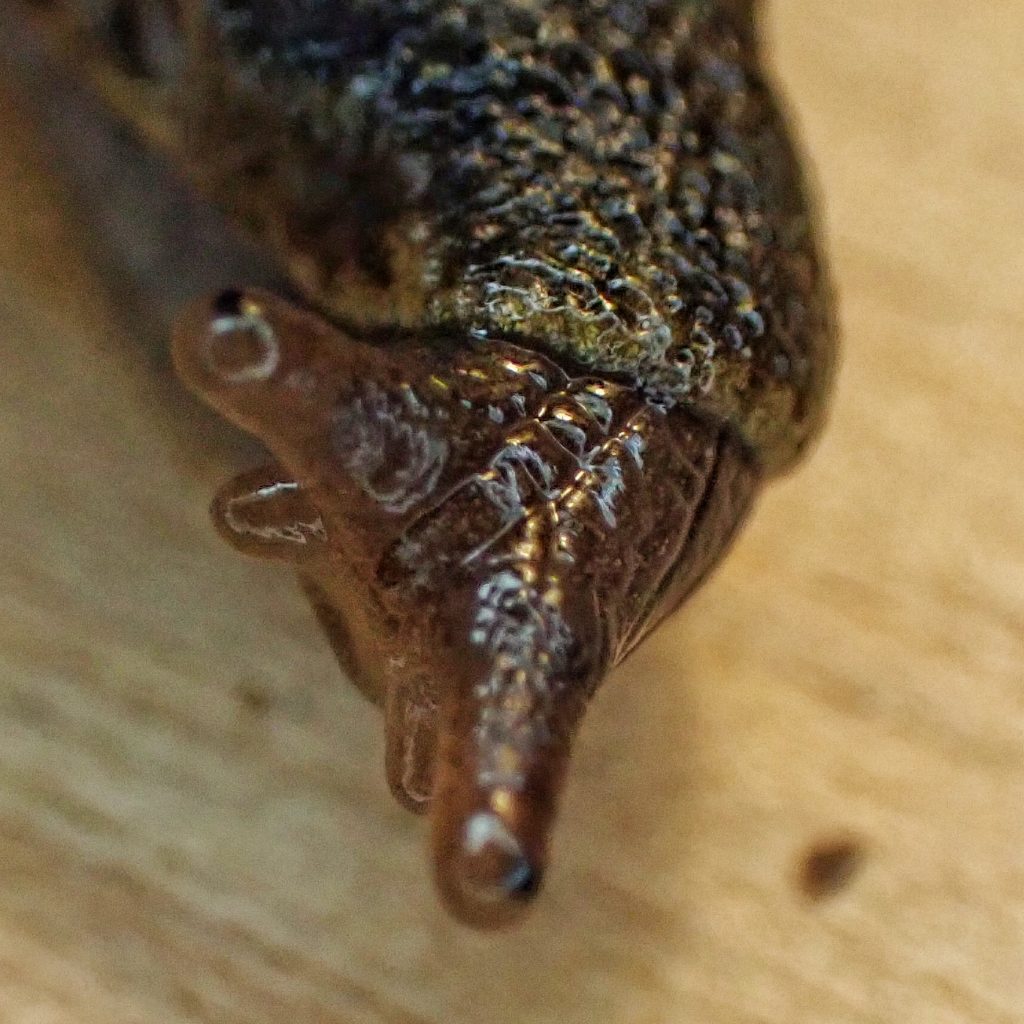
Many slugs can change both the volume and consistency of their mucus secretions, and this appears to provide a defense against predation. Thomas Burke, in his outstanding “Land Snails and Slugs of the Pacific Northwest” (2013- the bible for those interested in the terrestrial gastropods of our region), recalls seeing “…the predatory snail Haplotrema vancouverense drop a Prophysaon vanattae after the normally clear mucus of the slug quickly turned white when it was attacked.” The taildroppers of Prophysaon have another neat trick, a process called autotomy (self-amputation). They can, when threatened, expand their ‘tail’, while compressing their body ahead of the line of abscission, and pop off that tip, along with a load of mucus. The tip writhes around and attracts the predators attention, whilst the slug ‘scurries’ away. This specimen seems to have autotomized recently, because the ‘tail’ hasn’t regenerated much yet, and their is no obvious line of abscission, a feature that is usually quite distinct.
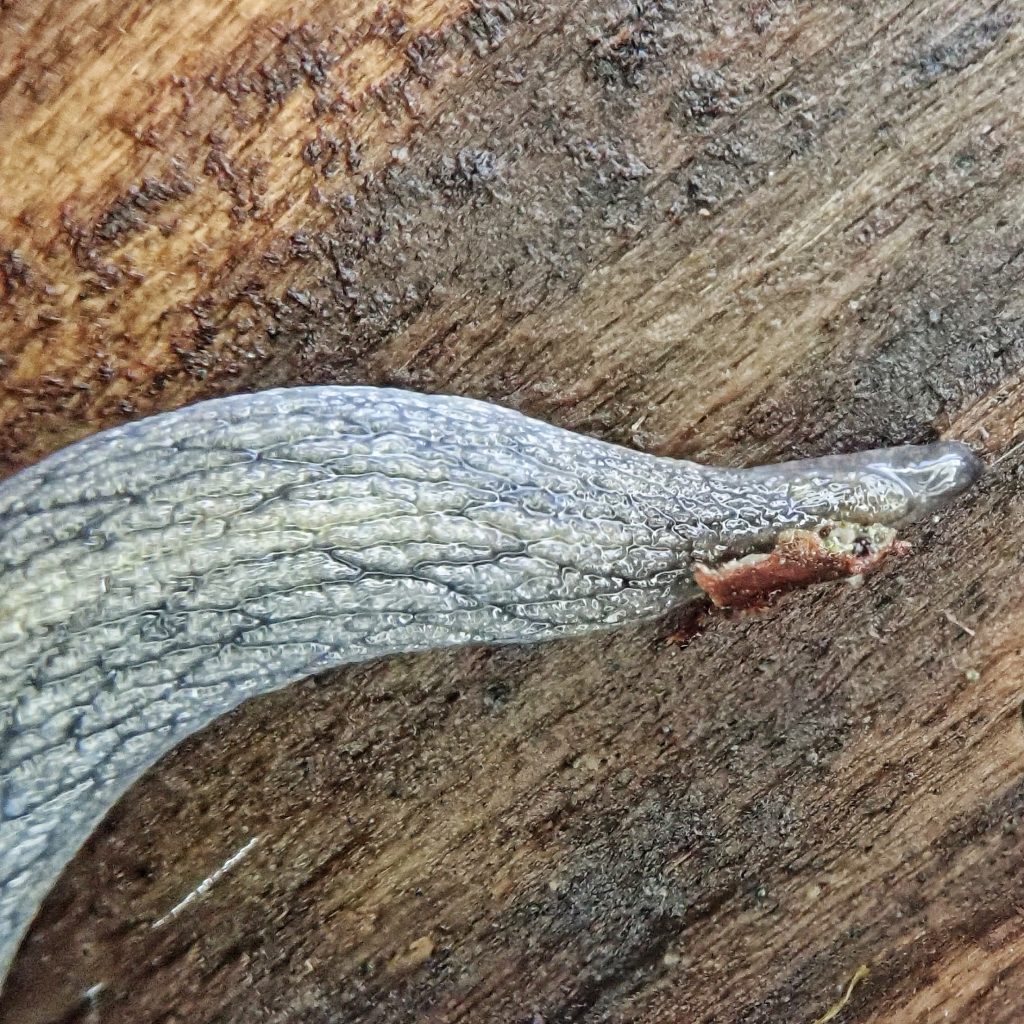
Though self fertilization for these hermaphroditic slugs is possible, there are biological systems that suppress autosperms (sperm of self) in favor of allosperms (sperm of others). The potential benefit of self fertilization is that, in low population densities, there is still reproduction occurring. The downside is that, because this is not parthenogenesis but sexual reproduction, it is the worst form of inbreeding, pairing very similar chromosomes and reinforcing negative genetic traits. The dangers of inbreeding, which include disorders caused by pairing recessive genes, sterility, and lowered longevity, are inherent in every egg produced, and may eventually be passed along to the population as a whole.
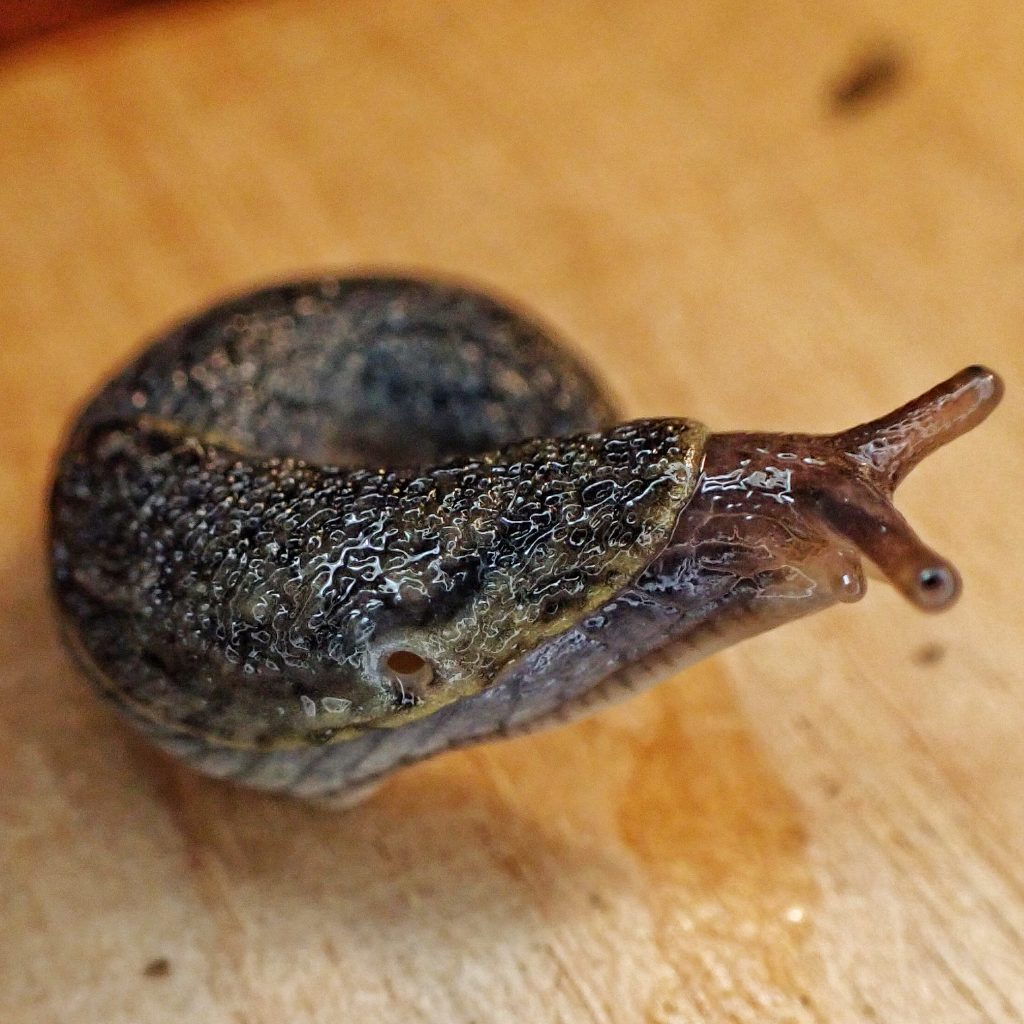
The taxonomy of terrestrial snails and slugs is, in general, in flux, and in three different recent references I find P. foliolatum in three different families; Arionidae in ITIS, Ariolimacidae on Wikipedia, and Anadenidae in Burke. ITIS seems like the most accepted clearinghouse for taxonomic information, so, for now, I’ll go with calling these slugs members of the family Arionidae, but that is likely to change.
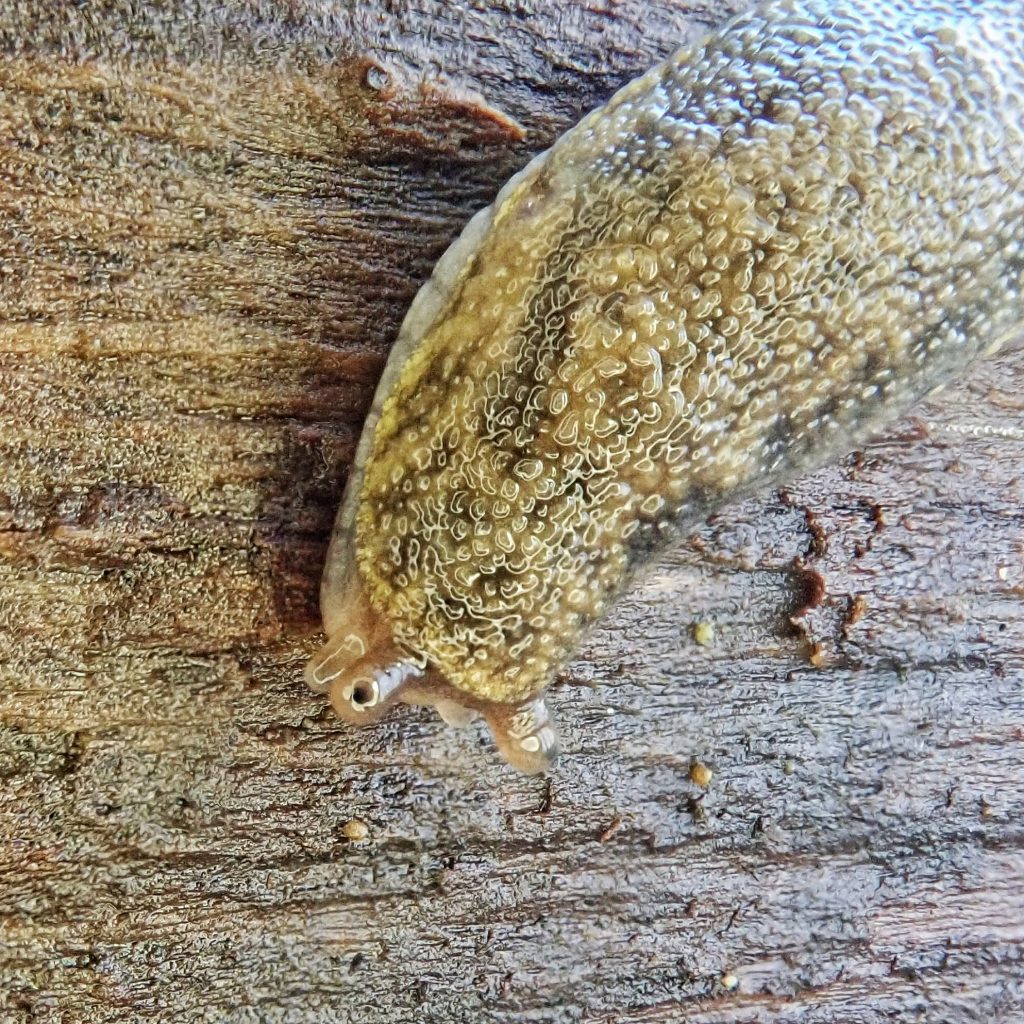
Description-Medium sized (may reach 4” long, but usually 2-3”) slug, often bluish grey but may also be brownish grey, reddish brown, yellow, black, or white; has a yellow border on the margin of the mantle, and there are usually dark bands near those borders; distinct and intricate pattern of diamond to hexagon shaped reticulations on the sides of the body and the tail; outside margins of the foot with ± vertical lines; pneumostone located in the front half of the mantle; sole of foot is pale cream color.
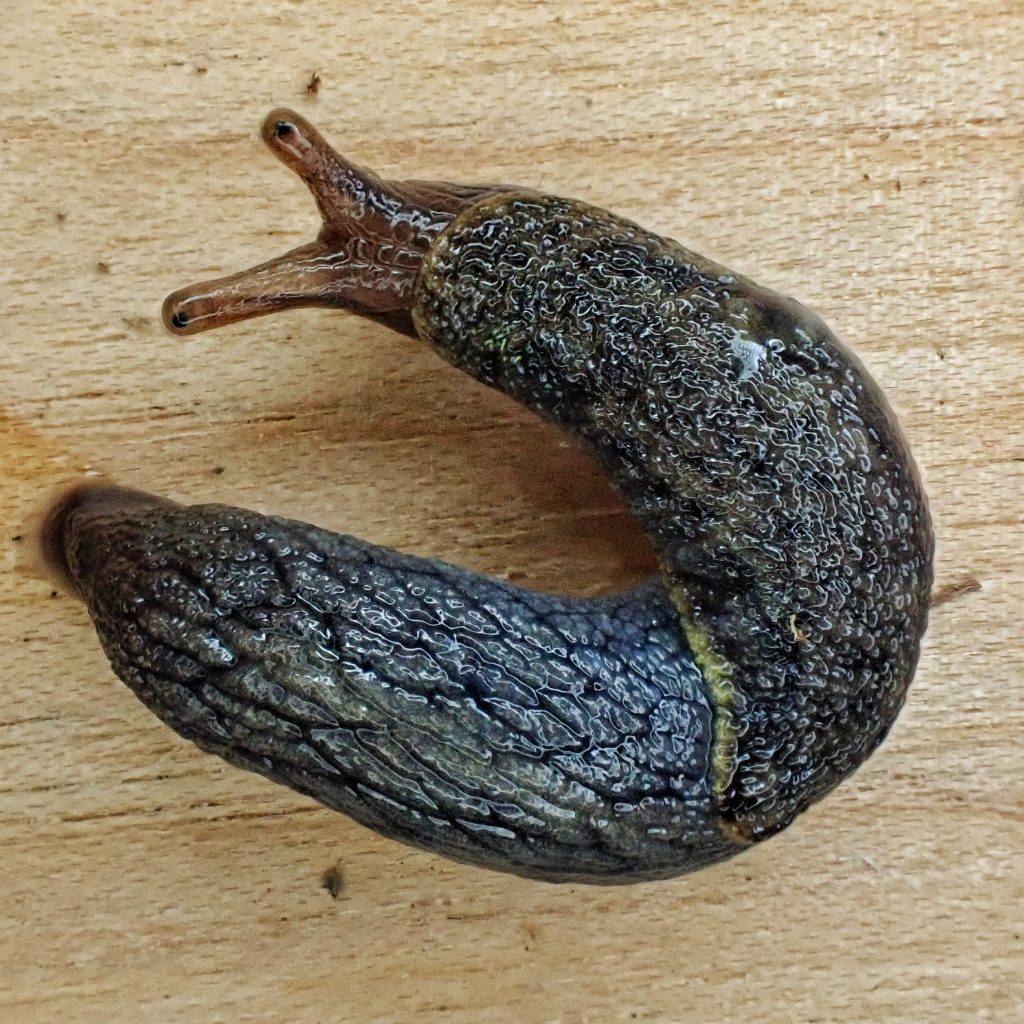
Similar species–Prophysaon andersonii lacks the yellow border around the mantle; other Prophysaon lack distinct reticulations; Arion spp. lack tail abscission; other slugs have the pneumostone in the rear half of the mantle.
Habitat-Moist to mesic forests and woodlands up to 3,000’.
Range-Native to western Washington, nw Oregon, sw BC; thus far it has only been found outside of this range in Sweden, where it was apparently introduced through nursery stock of Salal.
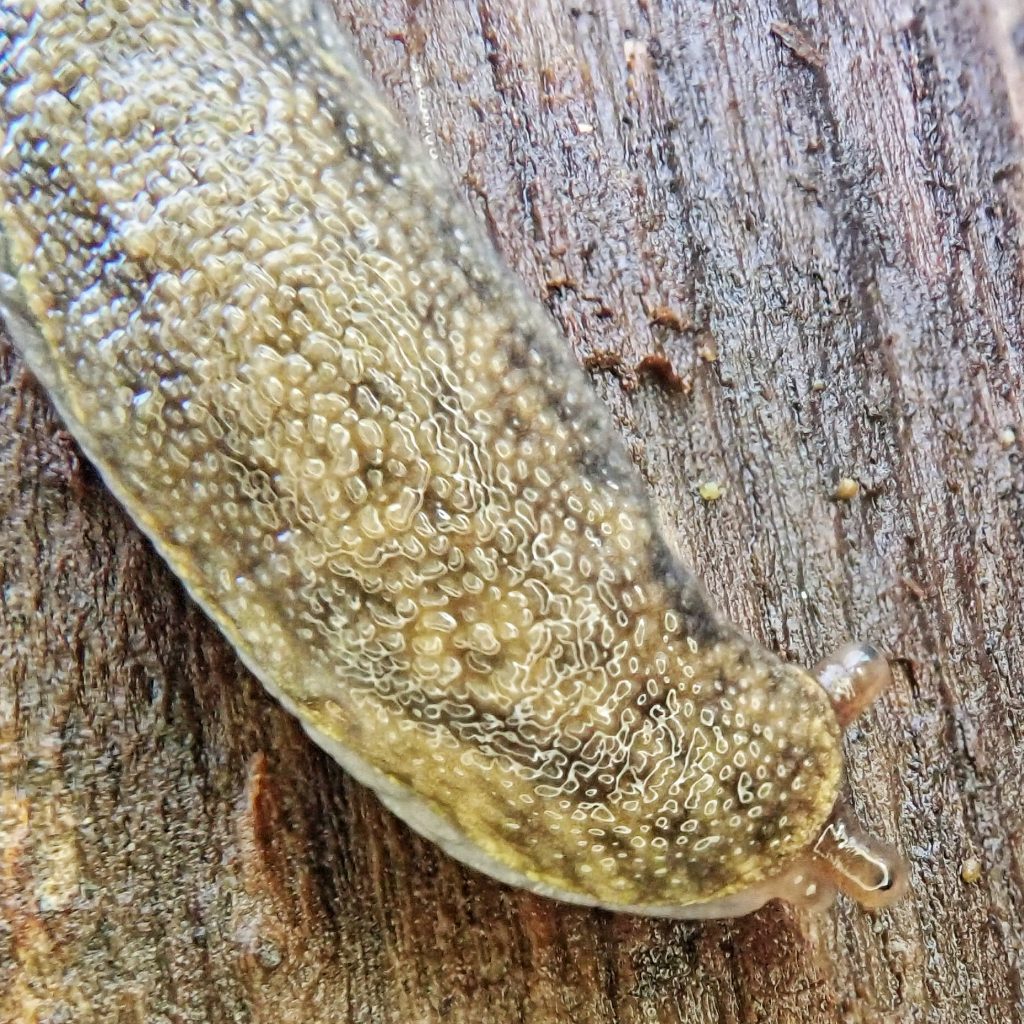
Eats– Primarily fungi (micorrhiza and spores, as well as fruiting bodies), decomposing leaf litter, and possibly Myxogastria and lichen.
Eaten by-The staphylinid beetle Ocypus olens, the carabid beetles Scaphinotus angusticollis, S. marginatus, S. angulatus, Carabus nemoralis, Pterostichus lama, and Omus audouini, amongst many other beetles; the carnivorous snail Haplotrema vancouverense; they are also preyed upon by some birds and small mammals.
Adults active-Fall and winter for mature adults.
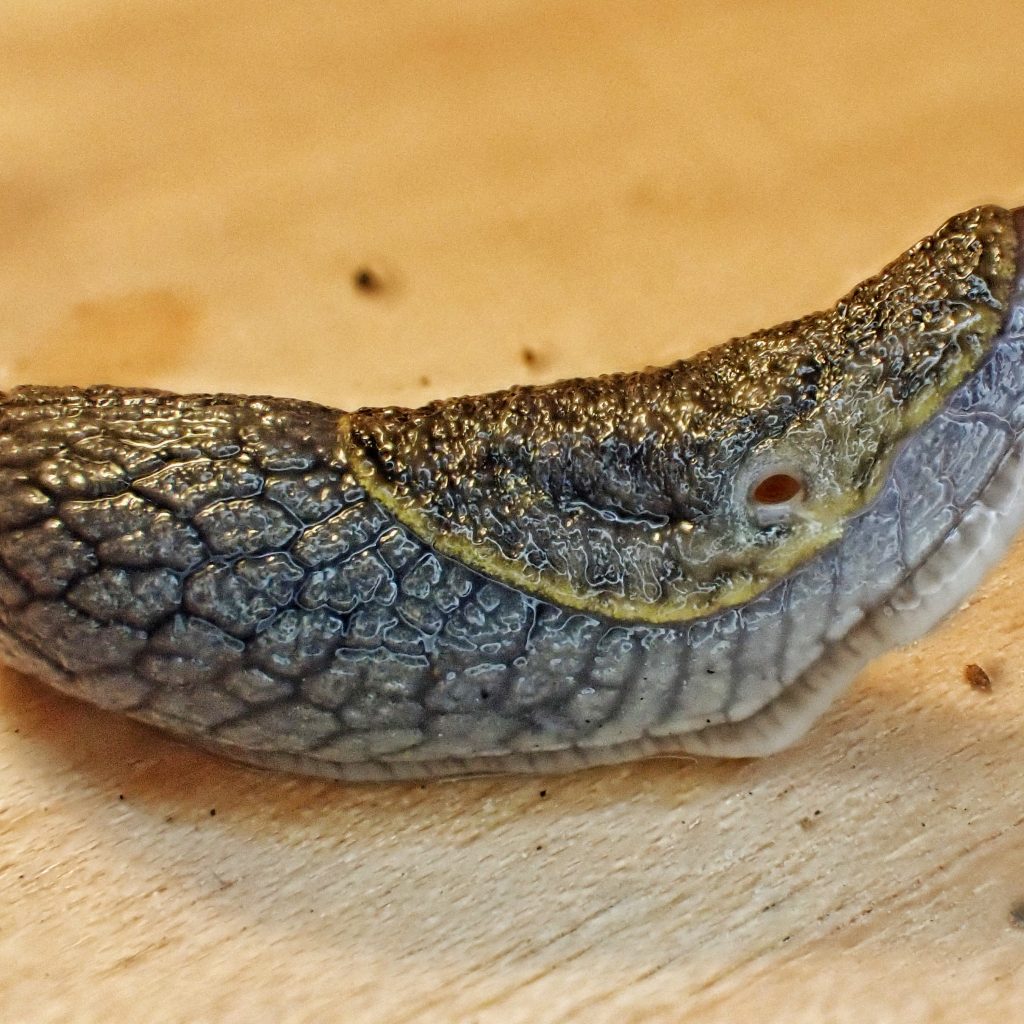
Life cycle-Probably (based on general Prophysaon sp. tendencies) breeds in fall and winter, with eggs laid under cover of logs, woody debris, leaves, and other forest and woodland floor litter, with eggs hatching in the spring; due to a lack of mature adults being found in the spring it is assumed that the full life span of an individual is about a year.
Etymology of names–Prophysaon is from the Greek words for ‘bellows in front’, referring to the pneumostone being in the forward portion of the mantle. The specific epithet foliolatum is from the Latin for ‘leaves on the side’, and my guess, from reading the original description, is that that refers to “the little leaf-like areolae by which the surface is marked.” (Gould;1851)
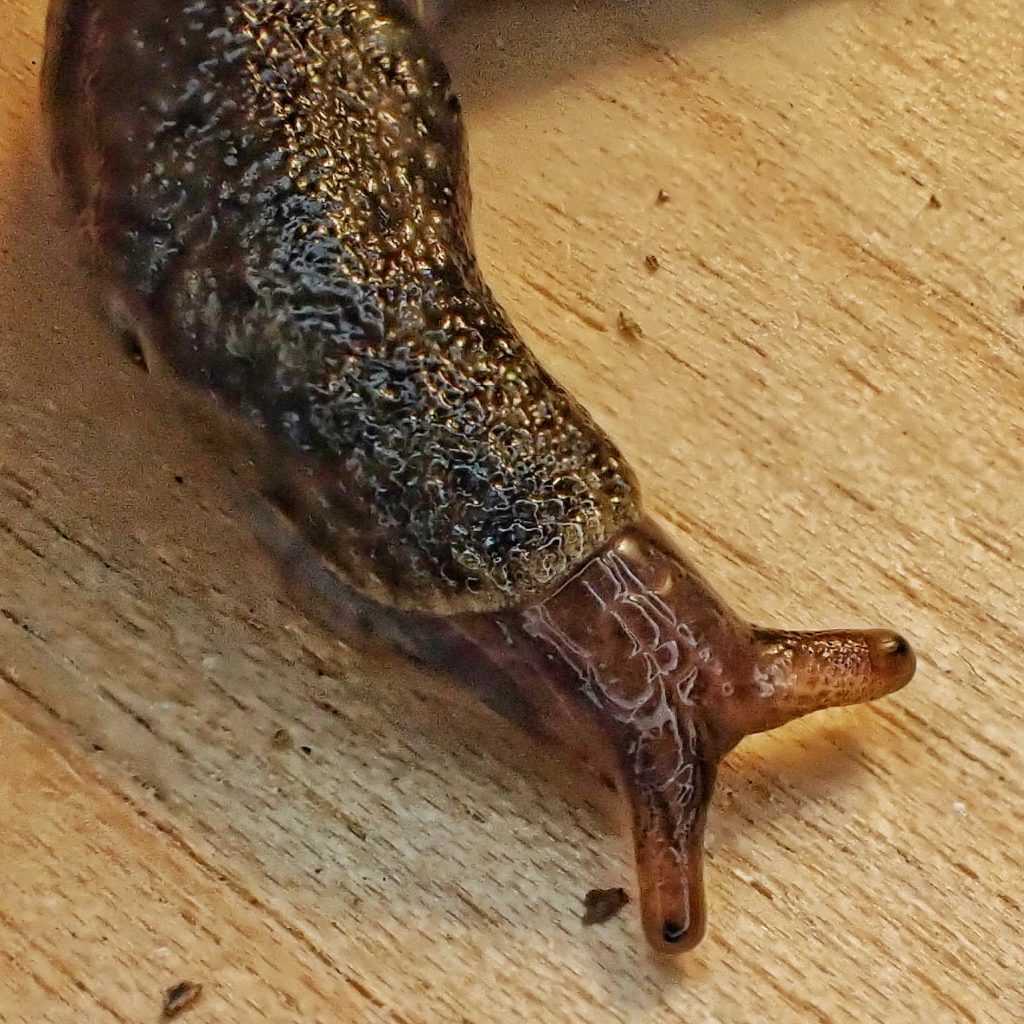
https://www.centralcoastbiodiversity.org/yellow-bordered-taildropper-bull-prophysaon-foliolatum.html
http://linnet.geog.ubc.ca/efauna/Atlas/Atlas.aspx?sciname=Prophysaon%20foliolatum
https://www.fs.fed.us/r6/sfpnw/issssp/documents3/ca-ig-prophysaon-coeruleum-201404-508.pdf
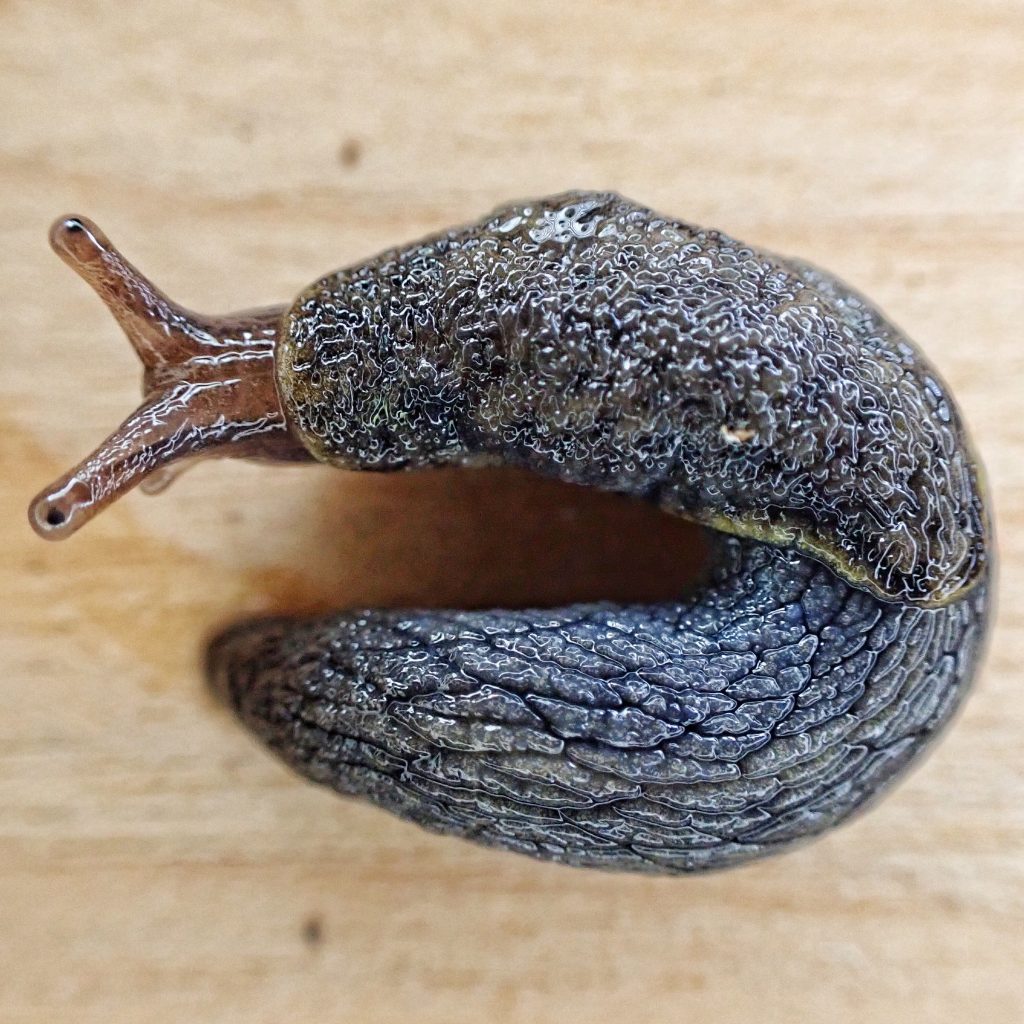
What wonderful creatures slugs are, made many times more real to me here in this engaging write-up than in any similar account I can recall having read. Thanks Dan!
Thank you, Trevor!